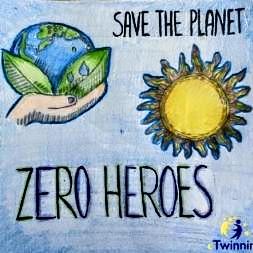🚰 SDG 6 Clean water and sanitation
SDG6 : Clean water and sanitation
Sustainable Development Goal 6 (SDG 6 or Global Goal 6) declares the importance of achieving "clean water and sanitation for all".
According to the United Nations, the overall goal is to: "Ensure availability and sustainable management of water and sanitation for all." by 2030 covering the main areas of water supply and sanitation and sustainable water resource management.
SDG6: Clean, affordable, accessible water and sanitation
Does it sound difficult to achieve?
While substantial progress has been made in increasing access to clean water and sanitation, billions of people—mostly in rural areas—still lack these basic services. Worldwide, one in three people do not have access to safe drinking water, two out of five people do not have a basic hand-washing facility with soap and clean water, and more than half of the world does not have access to safe sanitation.
Facts and Figures about water
1 in 4 health care facilities lacks basic water services
3 in 10 people lack access to safely managed drinking water services.
Women and girls are responsible for water collection in 80 per cent of households without access to water on premises.
Between 1990 and 2015, the proportion of the global population using an improved drinking water source has increased from 76 per cent to 90 per cent
Water scarcity affects more than 40 per cent of the global population and is projected to rise.
More than 80 per cent of wastewater resulting from human activities is discharged into rivers or sea without any pollution removal
Each day, nearly 1,000 children die due to preventable water and sanitation-related diarrheal diseases
Approximately 70 per cent of all water abstracted from rivers, lakes and aquifers is used for irrigation
Floods and other water-related disasters account for 70 per cent of all deaths related to natural disasters
Goal 6 Targets
6.1 By 2030, achieve universal and equitable access to safe and affordable drinking water for all6.2 By 2030, achieve access to adequate and equitable sanitation and hygiene for all and end open defecation, paying special attention to the needs of women and girls and those in vulnerable situations
6.3 By 2030, improve water quality by reducing pollution, eliminating dumping and minimizing release of hazardous chemicals and materials, halving the proportion of untreated wastewater and substantially increasing recycling and safe reuse globally
6.4 By 2030, substantially increase water-use efficiency across all sectors and ensure sustainable withdrawals and supply of freshwater to address water scarcity and substantially reduce the number of people suffering from water scarcity
6.5 By 2030, implement integrated water resources management at all levels, including through transboundary cooperation as appropriate
6.6 By 2020, protect and restore water-related ecosystems, including mountains, forests, wetlands, rivers, aquifers and lakes
6.A By 2030, expand international cooperation and capacity-building support to developing countries in water- and sanitation-related activities and programmes, including water harvesting, desalination, water efficiency, wastewater treatment, recycling and reuse technologies
6.B Support and strengthen the participation of local communities in improving water and sanitation management


